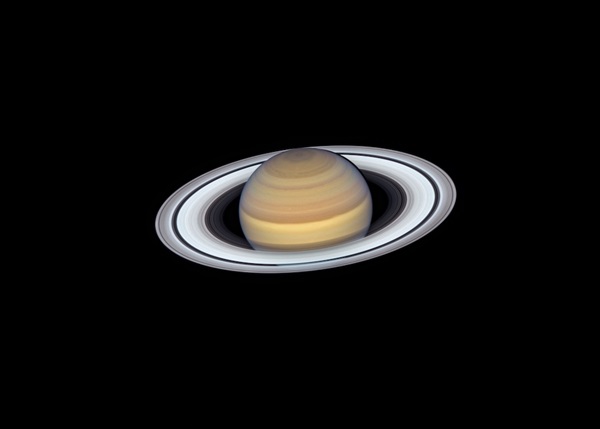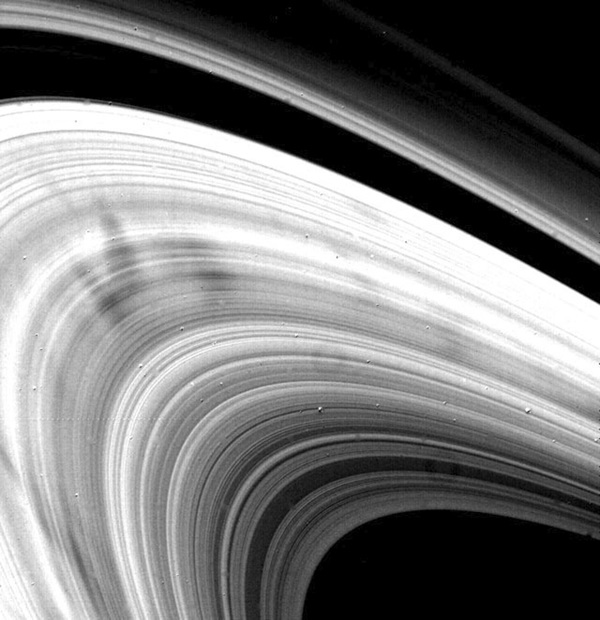Key Takeaways:
- From a distance, Saturn's rings present an appearance of remarkable uniformity, an observation contrasting with their composition of particles ranging from micron-sized grains to house-sized objects.
- This perceived macro-scale orderliness is attributed to the combined effects of gravitational influence and frequent inter-particle collisions within the ring system.
- Specifically, Saturn's equatorial bulge establishes an orbital plane, which is reinforced by the high density of ring material leading to recurrent collisions that mitigate particle velocity deviations, thereby maintaining a consistent planar structure.
- Despite their distant homogeneity, close-range data from missions such as Voyager and Cassini reveal the rings' true intricate complexity, featuring detailed structures including tightly wound spiral waves, vertical corrugations, and distinct gaps.
Why do Saturn’s rings appear perfect, without blemish or irregularity, if they are composed of particles that range from as large as a house next to grains of sand?
Saturn’s rings are a very orderly system. In panoramic images, they appear to be a generally flat disk with concentric structures. And yet the number of particles within the rings is similar to the number of grains of sand on Earth, each one on its own orbit around Saturn.
The reason the rings appear so uniform is a combination of effects, including gravity and collisions among the ring particles themselves. While the planets may look perfectly spherical, they all bulge slightly at the equator — a result of their spin. The gravity of the bulge affects the particles in Saturn’s rings, creating an orbital plane within which the ring material tends to remain. That isn’t to say that some of the particles don’t deviate from this norm, but because the rings are packed with material, collisions occur commonly and tend to enforce that norm by curbing their deviated velocities, ultimately keeping most particles within the plane. This explains why ring structure appears so uniform from a distance.
And yet, when viewed in close detail, Saturn’s rings are quite rich in structure. Data from the Voyager and Cassini missions reveal an abundance of tightly wound spiral waves, vertical corrugations, sharp-edged gaps, and more.











